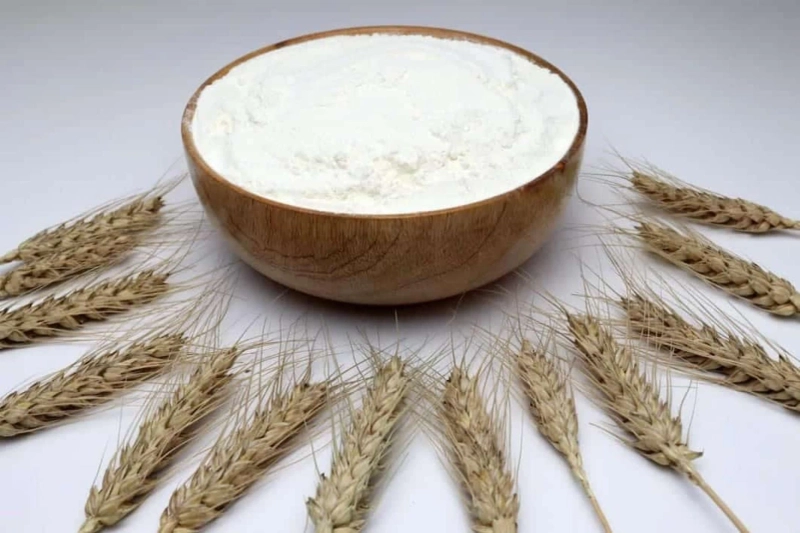Flour will always be a pantry staple. It\'s one of the most versatile tools in anyone\'s arsenal, capable of everything from baking to cooking to making pasta and noodles. Are you perplexed by the flour types and uses? When it comes to baking with flour, there are more options than ever before: wheat, wholewheat, and gluten free. It can be difficult to choose the right one for your recipe, so we have put together a quick guide to help you decide.
With so many different types of flour to choose from, it is critical to understand which ones to use and how to use them. Here is a quick guide to determining the best flour types and uses for the job.
Must Know Flour Types and Uses
While we are willing to put in a lot of effort in our baking experiments (after all, even if the results are not perfect, they are usually delicious!), understanding the different flour types can help you get a head start. The main distinction between flour types and uses is the protein content, which is determined by the type of wheat used to make it. Hard wheat flour contains 10 to 14 percent protein and is made from high-protein wheat varieties. Those made from low-protein wheat varieties, such as soft wheat or white wheat, have a protein content of 5 to 10%.
More protein means more gluten, which means more strength. In baking, the amount of gluten determines the structure and texture of the baked good. Now that we have completed our basics, so let us dig a little deeper into the differences between the most common flour types and uses.
All-Purpose Flour
Its name is self-explanatory. All-purpose flour is the most versatile flour types and uses can be used in a variety of baked goods, making it a staple among staples. This variety is a blend of high-gluten hard wheat and low-gluten soft wheat that is high in B vitamins and iron. All-purpose flour (also known as AP flour for short) should be a kitchen staple. It is made from a blend of soft and hard wheat varieties and has a moderate protein content of 9 to 11 percent. As the most adaptable flour, it can be used to make flaky pie crusts, chewy cookies, and fluffy pancakes. If a recipe specifies "flour," it most likely refers to all-purpose flour. Cookies, muffins, bread, pie crusts, pancakes, biscuits, pizza dough, and pasta are the best uses for all-purpose flour.
Cake Flour
Cake flour has the lowest protein content of any flour types and uses, ranging from 5 to 8%. As a result, it produces less gluten, resulting in softer baked goods—ideal for cake recipes, muffins, and biscuits. Cake flour absorbs more liquid and sugar than all-purpose flour, resulting in super-moist cakes. It is made from soft wheat, which gives it a fine and silky texture. Cake flour works best in the following recipes: sponge cake, pound cake, layer cake, angel food cake, and muffins.
Pastry Flour
Pastry flour, with an 8 to 9 percent protein content, falls between all-purpose flour and cake flour. This flour types and uses, achieves the ideal balance of flakiness and tenderness, making it the go-to ingredient for pie crusts, tarts, and cookies. Make your own at home by combining 1 1/3 cups all-purpose flour and 2/3 cup cake flour.
Pie crusts, cookies, muffins, pancakes, cakes, biscuits, and bread sticks are the best uses for pastry flour.
Bread Flour
Bread flour, which is made entirely from hard wheat, is the strongest of all flours types and uses, with a high protein content of 12 to 14 percent. Because of the high gluten content required for yeasted breads to rise properly, this comes in handy when baking them. Bread flour gives your baked goods more volume and a chewier crumb.
Artisan breads, yeast breads, bagels, pretzels, and pizza dough are the best uses for bread flour.
Self-Rising Flour
The baking powder and salt added during the milling process are the secret ingredients of self-rising flour. It is typically made from soft wheat and has a protein content of 8 to 9 percent. Make your own at home by combining 1 cup pastry flour, 12 teaspoon baking powder, and 14 teaspoon salt. When baking, be careful not to substitute self-rising flour for other flours types and uses! The additional ingredients may cause the rest of the measurements in your recipe to be off. Self-rising flour is ideal for making pancakes, biscuits, and scones.
Whole Wheat Flour
During the milling process, a wheat kernel is separated into its three components: endosperm, germ, and bran. Only the endosperm is milled to make white flour. Whole wheat flour is made by reintroducing varying amounts of germ and bran into the flour. Whole wheat flour has a high protein content of around 13 to 14 percent, but the presence of germ and bran affects the flour\'s ability to form gluten. As a result, whole wheat flour types and uses usually results in super sticky dough and denser baked goods. Because of the presence of wheat germ, whole wheat flour is far more perishable than white flour. While white flour can be stored in an airtight canister in your pantry for up to eight months, whole wheat flour is only good for three months. Whole wheat flour works best in the following recipes: cookies, bread, pancakes, pizza dough, and pasta.
White Whole Wheat Flour
White whole wheat flour, not to be confused with bleached flour, is made from the same ingredients as whole wheat flour, but from a paler variety of wheat known as hard white wheat. This flour types and uses contains the same amount of protein as whole wheat flour (13 to 14%) but tastes slightly sweeter due to its lower tannin content. Because whole wheat flour and white whole wheat flour have the same health benefits, this is the flour to use if you prefer the taste and texture of white bread but want the nutritional value of whole wheat. Bread, muffins, pizza dough, and cookies are the best uses for white whole wheat flour.
Gluten-Free Flour
Gluten-free flour can be made from a variety of ingredients, including rice, corn, potato, tapioca, buckwheat, quinoa, sorghum, and nuts. To help stimulate the chewiness associated with gluten, xanthan gum is sometimes added to gluten-free flour. Gluten-free flour cannot always be substituted 1:1 for white flour, so double-check your recipe before making the switch of such flour types and uses. Gluten-free flour is best used in the following recipes: cakes, cookies, pancakes, bread, and muffins.
Almond Flour
Blanching almonds in boiling water to remove the skins, then grinding and sifting them into a fine flour, is how almond flour is made. This gluten-free favorite flour types and uses is high in healthy fats and fibre while being low in carbs. To replace wheat flour with almond flour, first replace the flours 1:1 and then add more of a rising agent (like baking powder or baking soda) to account for the almond flour\'s heavier weight. Please keep in mind that this will require some trial and error. Almond flour is best used in the following recipes: cookies, muffins, pancakes, biscuits, and bread.
Doppio Zero or 00 Flour
Double zero flour, also known as doppio zero or 00 flour, is a finely ground Italian flour that is commonly used in the preparation of pasta and pizza dough. Grind sizes in Italy and other parts of Europe range from double zero to two. The finest grind is double zero, and the coarse is two. The term "double zero" does not refer to the amount of gluten or protein in the flour.
In the United States, flour types and uses grades are determined by protein content. Fine flours, such as cake flour or pastry flour, have low protein levels and are ideal for creating a delicate, moist crumb. Bread flour and all-purpose flour, for example, contain more protein and thus more gluten.
Storage of Flours
To extend the shelf life of any specialty or whole wheat flours, store them in the refrigerator or freezer—whole wheat and nut-based flours naturally contain oils that can go rancid. All flours types and uses can be chilled, but most white flours, including all-purpose, cake, pastry, bread, and self-rising, are shelf-stable and can be stored in a cool, dry spot in the pantry or in a canister on the counter.



